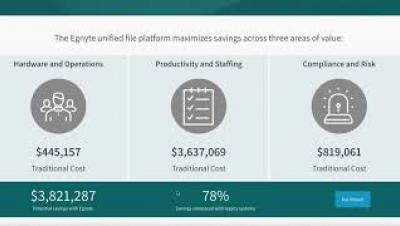Security | Threat Detection | Cyberattacks | DevSecOps | Compliance
July 2020
Introducing the Egnyte Content Services Platform
Today, we are excited to be launching the Egnyte Content Services Platform, the evolution of our industry-leading content collaboration and data governance technologies, to help organizations address the issues they face and allow for effective deployment of secure content services. The Platform is a major step forward in the progression of how companies create, use, transact, and manage their critical data.
5 Steps to Digitizing Your Workspace
Picture your workspace at the office from ten, five, or even two years ago—what has changed? Your computer likely occupies less space than it did in the past. Your office phone, which was once wired to the corner of your desk, now sits comfortably in your pocket. And you are probably working at home exclusively, or at least most of the time.
Ditch the Checklist: Why Automation is the Key to Content Compliance
Compliance frameworks provide guidelines for effective and secure operations for content management across a company’s various repositories. They’re written as a set of controls, each one which corresponds to different settings and policies that an organization must follow in order to ensure the safety of their data.
Top 5 Risks that Can Compromise Your Life Sciences Data
The goal of every life sciences company is to improve the lives of patients by getting their product to market. To do so often requires successfully completing a clinical trial. It goes without saying, however, that keeping the resulting data secure and compliant is paramount. Restricting access to only those that need it is an essential first step, but there is much more that needs to be done.
Smart Cache: Where Infrastructure Meets Content Intelligence at the Edge
Businesses have long relied on Egnyte’s hybrid technology for low-latency access to large files in bandwidth-constrained environments, and to ensure business continuity during internet outages. By syncing cloud content to a local storage device, hybrid architecture enables caching close to the user, which offers major benefits for customers who need cloud-scale connectivity with on-prem performance.
Transform IT With File-sharing Services For the Future
As more and more businesses were forced to move to the cloud with the COVID-19 crisis, content and data have proliferated across devices, users, apps, and locations as a result of the new, mass work-from-anywhere reality. This brought a growing set of challenges to prevent data silos and content sprawl while remaining compliant with data regulations and governance.








